This post contains affiliate links for which I may make a small commission to help keep the site running. You will not be charged extra for these items had you not clicked the links. Thank you for your help to keep the site running!
Are you thinking of being a tourist driving in the UK?
Overall, you should know that the UK is incredibly well connected by train and public transportation is a very popular way to get around the country.
It is perfectly okay, recommended, and popular to do a UK trip without driving in England as a tourist, particularly if you’re planning on spending time in cities or choosing a city like London as a base and then taking day trips.
For instance, the train from London to Edinburgh takes about 4 hours and is much easier than driving there.
From Edinburgh, you could then take a train out to a variety of Scottish destinations, including the Highlands.
Compared to countries like America where, in many places, a car is necessary to get around, the UK can still be explored in-depth using train connections.
However, there are of course places where having a car is really helpful and the best way to see the sites.
If you want to do more than just a day trip to places like the Cotswolds, the Lake District, Cornwall, North Wales, the New Forest, etc, you may find renting a car is something you want to consider to be able to plan your own schedule and explore further than where train stations can get you.
The question of “should you rent a car in the UK” depends on both your willingness to have someone confident enough to drive on the other side of the road and learn some new traffic patterns and where you’re traveling to.
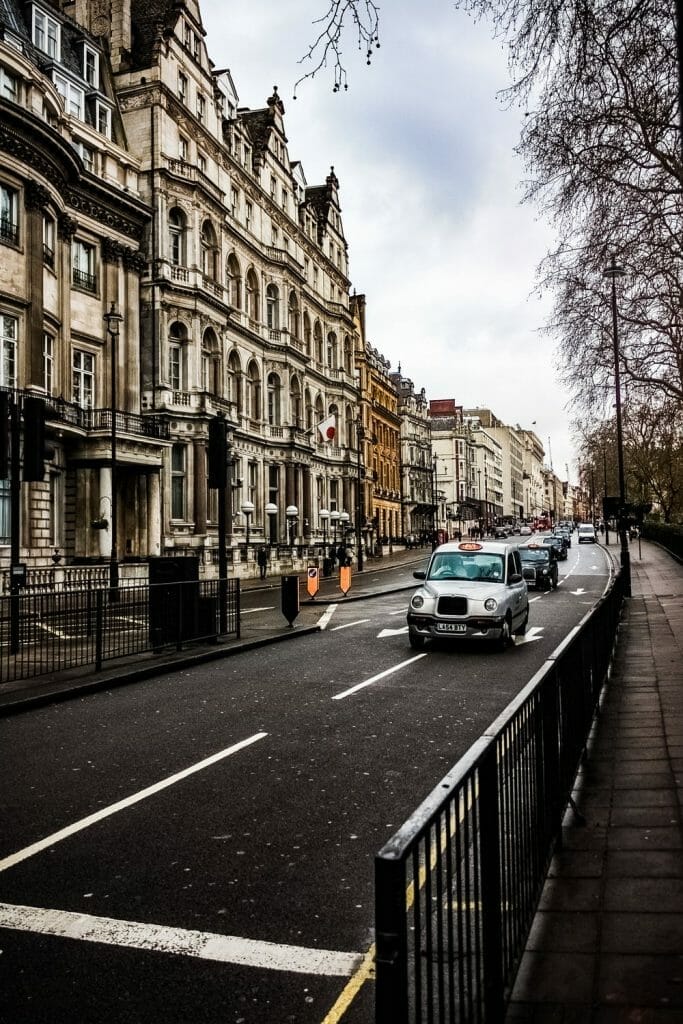
GET A FREE UK GUIDE and ACCESS TO MY PLANNING FB GROUP
With 50+ pages of helpful travel tips and the “best of” UK lists, this is your ad-free key to your UK trip.
Hey! Want more honest UK tips and planning advice? Click here to join my London and UK Travel Tips Facebook group, where I can answer more of your questions!
Driving in the UK and London
If you do decide you would like to rent a car to drive in the UK, here are some things you need to know.
#1 Must-Do Before Driving in the UK as a Visitor
My #1 tip for anyone wanting to drive in the UK as a visitor is to purchase the Car & Motorbike Driving Guide from Tripiamo here.
This guide, specifically developed for visitors, is going to give you everything from expert tutorial videos on topics like road signs and how to navigate toll zones to their 360 degree instructor-led practice videos to give you a feel for what it’s going to feel like when you’re actually behind the wheel in the UK.
This is essential for your own safety and comfort when driving in the UK, as well as for all of the other drivers on the road!
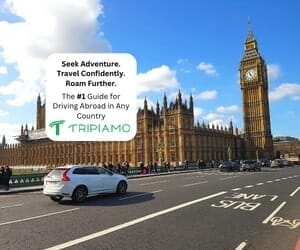
No matter how accomplished or experienced of a driver you are back home, whether in the US or elsewhere, the UK has its own incredibly different traffic patterns, rules, etiquette, and plenty that you may not have encountered before like multiple roundabouts in one (fun!), unfamiliar road signs, and more.
I highly recommend Tripiamo’s guides and have made it easy for you to find the UK driving one with an easy link in this button below.
Can I Drive in England as a Visitor on My License?
Visitors to the UK can drive in the UK for up to 12 months with their full and valid license from their home country.
You do not need to get an international license or alert anybody when you come into the country that you plan on driving if your license is in English.
Again, this must be a full and valid license, not a learner’s permit or provisional license.
The one caveat is that if your license is not in English, you may want to obtain an international driving permit to keep with your license for car insurance purposes and proving the validity of your license.
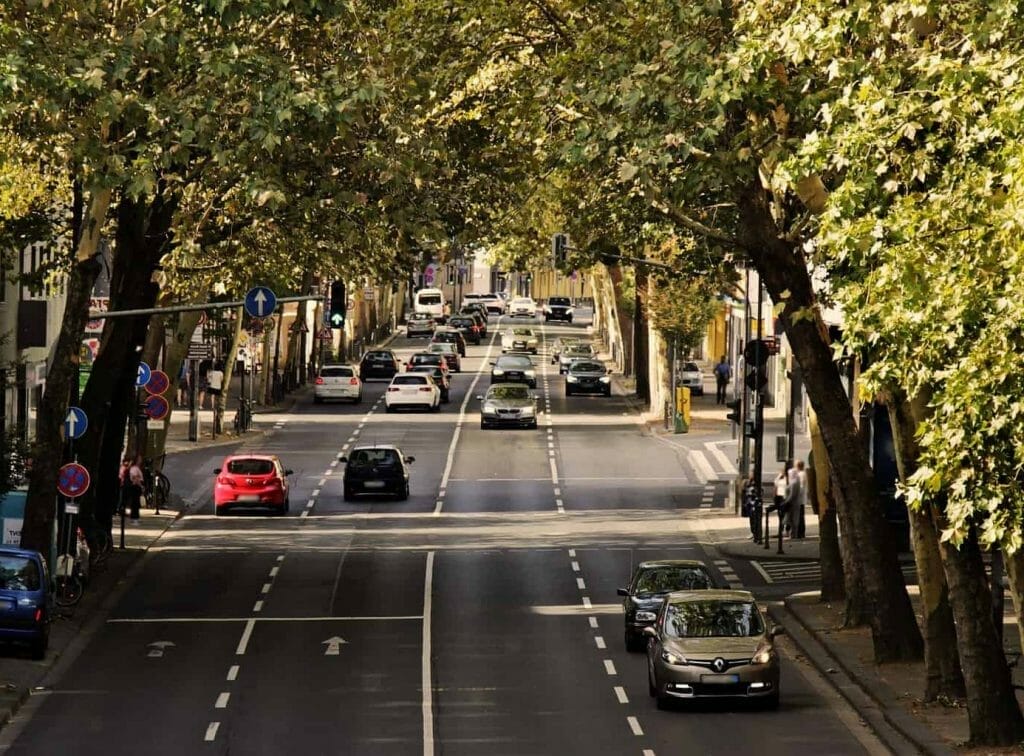
IMPORTANT: are you coming to the UK from abroad?
In case you’re reading this from outside the UK and will be a foreign visitor here, you need to know these 2 things to stay safe and save money.
- Travel insurance – you need it when going overseas! I use this site to get the best quotes and purchase my packages from. Do not skip this – having medical coverage abroad as well as other coverage in case of missed flights, lost luggage, etc is essential. As I said, I have never gone wrong using this site.
- International debit cards without fees – do not get stuck paying extortionate foreign fees when using your card abroad (and the UK is almost all card these days). I use the Wise debit and travel card which you can apply and learn more about here.
How to Rent a Car in the UK
When renting a car in the UK, the typical minimum age is around 21, but the absolute youngest I have ever found is 17 – this, of course, is not without significant cost and restrictions.
It’s best if someone over 25 is renting the car to ensure the better price and no concerns about car rental companies taking you.
You will need your driver’s license from your home country, an International Driving Permit if that license is not in English, your passport, usually a credit card to be able to put the deposit on, and sometimes they will want to see a bill or other official paperwork with the same address as your driving license.
The only way to be sure you have the exact documents you need is to check the FAQ of your car rental company, of course.
People often ask me about car rental companies in the UK, and I strongly recommend using Discover Cars to help you compare and find the best prices.
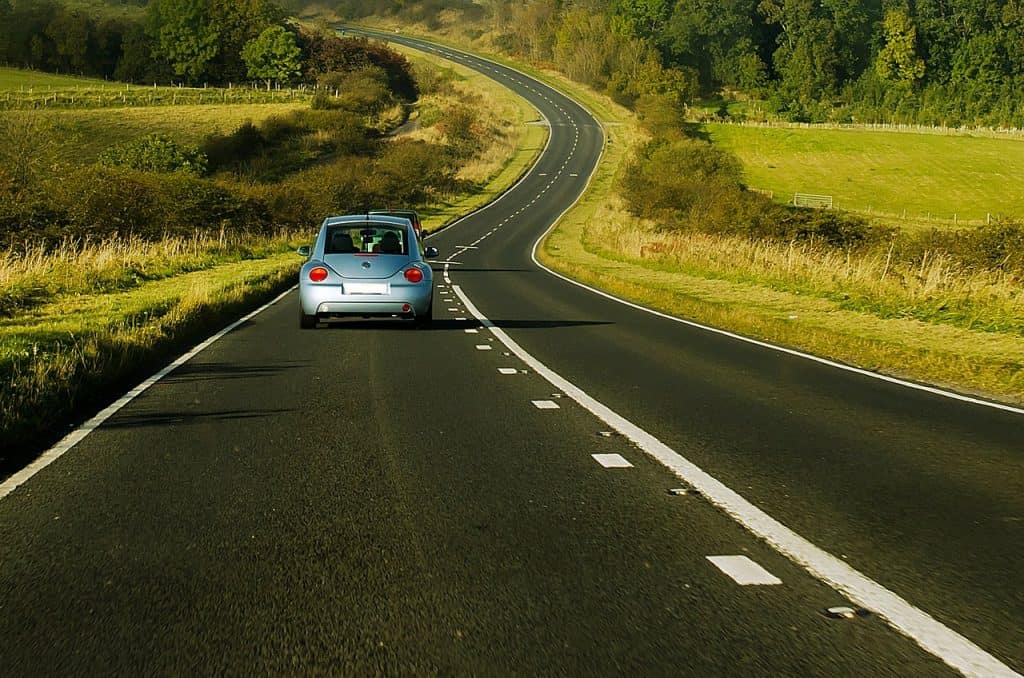
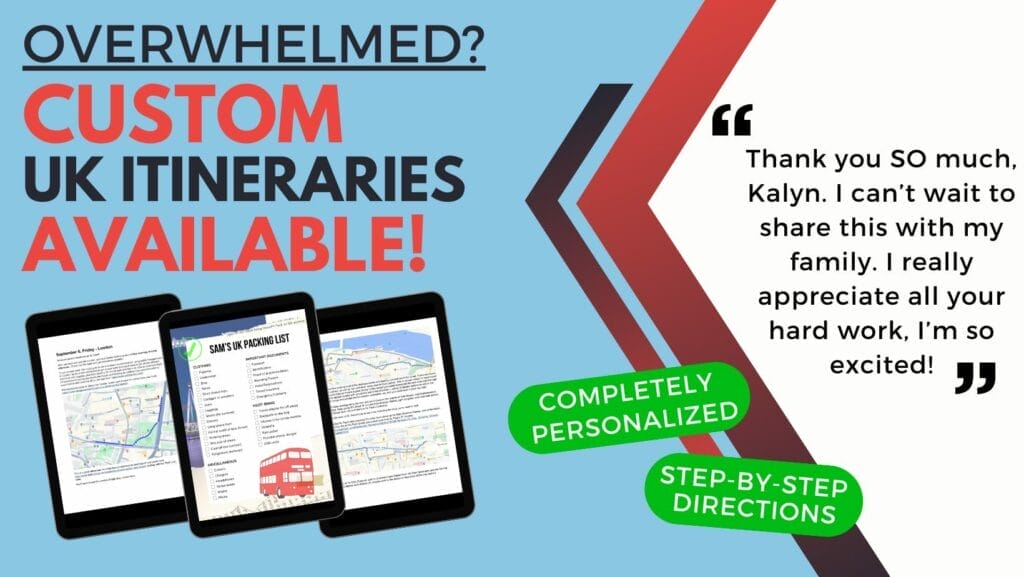
Insurance when Driving in the UK
Car rental companies in the UK include a basic level of insurance when you rent the car, and you can also “add on” extra coverage through them directly.
A popular recommendation is to get their basic coverage that’s included, and then to use a site like “insurance4carhire.com” to get additional insurance that will cover you for extra amounts without the cost of the inflated car rental company insurance.
Insurance is a very personal decision.
We often just opt to take the basic coverage through the car rental company, but I would recommend either increasing the amount through them or using insurance4carhire.com as you will be driving in an unfamiliar country which comes with even more risk of damaging the car (and of course, accidents can happen to anyone, regardless of how familiar with the roads you are).
Differences in Driving in the UK and US
Part of the adjustment process in learning to drive in the UK is due to switching to driving on the left side of the road, but to be honest I think it’s the other rules and regulations that are harder to get nailed down in your head!
This isn’t a driving manual – for the rules of the road, you’ll need to study up on the UK Highway Code.
But here are some of the main sticking points that many Americans won’t be used to.

Roundabouts
A roundabout, also known as a traffic circle in some parts of the world, is a replacement for an intersection.
Instead of all cars needing to stop and go when their light is the right color, the traffic keeps flowing and when you go is based on when you have no one coming on your right hand side.
Roundabouts aren’t often single lanes, though – there are usually multiple lanes and different signals (or indicators as they’re called in the UK) you need to give depending on when you’re ready to leave the roundabout onto the road again.
To give you an idea of how much experience I had with roundabouts before moving to the UK, they once built a roundabout in a shopping center in my hometown.
We were all perplexed, but excited to feel a bit European and figure out how to use this new traffic pattern.
Unfortunately, we didn’t get to practice for long because they removed it due to the number of people who didn’t realize they needed to do the “round” part of a “roundabout” and instead just drove straight through the middle.
Brits are shocked at our lack of roundabouts in the US – they view them as the best option for keeping traffic flowing and my husband dies a thousand culture shock deaths when we have to wait for a long time at a light in the US!
Of course, once you’ve conquered the rules of a single roundabout, you can then get used to a double roundabout where you come off one roundabout straight into another.
If you really feel like testing your skills or crying a lot, you can try the Magic Roundabout in Swindon, which is 7 roundabouts in one.
Yes, you heard me right.
Traffic Lights
The only thing I have to mention about traffic lights is that, firstly, most are standing up in a vertical fashion rather than hanging from above you.
And secondly, they go from green to yellow to red like American ones, but then also go from red to yellow to green!
I love this, as it shows both the cars when their turn is almost here, as well as pedestrians that they need to get the heck out of the road (or they should be by that point anyway!)

Pedestrian Crossings
Speaking of pedestrians, the UK is much more pedestrian-friendly than most of the US, and there are multiple different types of pedestrian crossings.
Many have animal names like “zebra” and “pelican” just to make it that much more fun.
In general, expect to yield to pedestrians in the UK and be much more aware of people on foot.
Brits will walk just about anywhere, as evidenced by the story that my sister-in-law tells about the time she was in Texas and decided to walk along a major road with no sidewalk and wondered why everyone was staring at her!
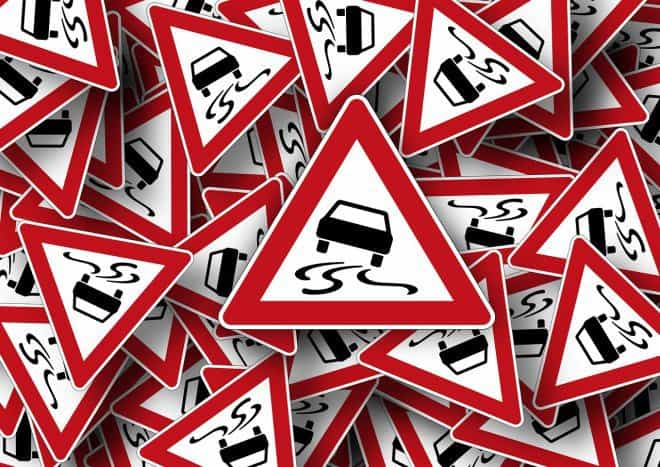
Street and Road Signs
Because the UK runs on roundabouts, you won’t find the same layout of road signs like stop signs everywhere because there are not usually intersections to stop at!
Instead, you’ll see a lot of “yield” signs and other road signs that help a driver know who has the right of way.
Learning the UK road signs is an essential part of driving in the UK.
You’ll also soon see that the actual street signs are not held up by a tall separate pole in the ground, but often attached to the buildings themselves in busy cities.
In the suburbs, you might find them as a separate structure, but it will be much lower to the ground so if you don’t see the road name, look down!

Box Junctions
A “box junction” is a junction which is filled with diagonal lines that indicates that you need to leave the junction (or intersection) clear.
You are expected to wait at the “start” of the box until you can make sure that you have enough room on the other side to clear it.
Small Country Lanes
England was not made for cars.
On the contrary, the roads were made first, mostly to fit horses, and cars came along way later.
This means that the roads are smaller, and also that there are tons of narrow country lanes that can barely fit me after a large meal, much less my car.
Or at least, that’s how I see it.
My husband has no problem driving them confidently and assures me he has “plenty of space” while I’m literally two inches away from the hedges.
The thing about these lanes is that they are often only big enough for one car to fit through, so you will find yourself needing to judge the traffic ahead and finding places to pull over and let someone pass.
This is a huge difference for me, coming from Florida, where all of our roads are wide enough for someone’s monster truck.
Often, there will also be roads that are not necessarily small country lanes, but “regular roads” with no median.
The lanes might be marked, or might not, but you’re expected to just stay on your side and know the rules of the road.
I’m still not used to feeling that close to other cars whizzing past me going the opposite direction, but mention it to a Brit and they’ll mostly have no inclination that it can or should be any other way!
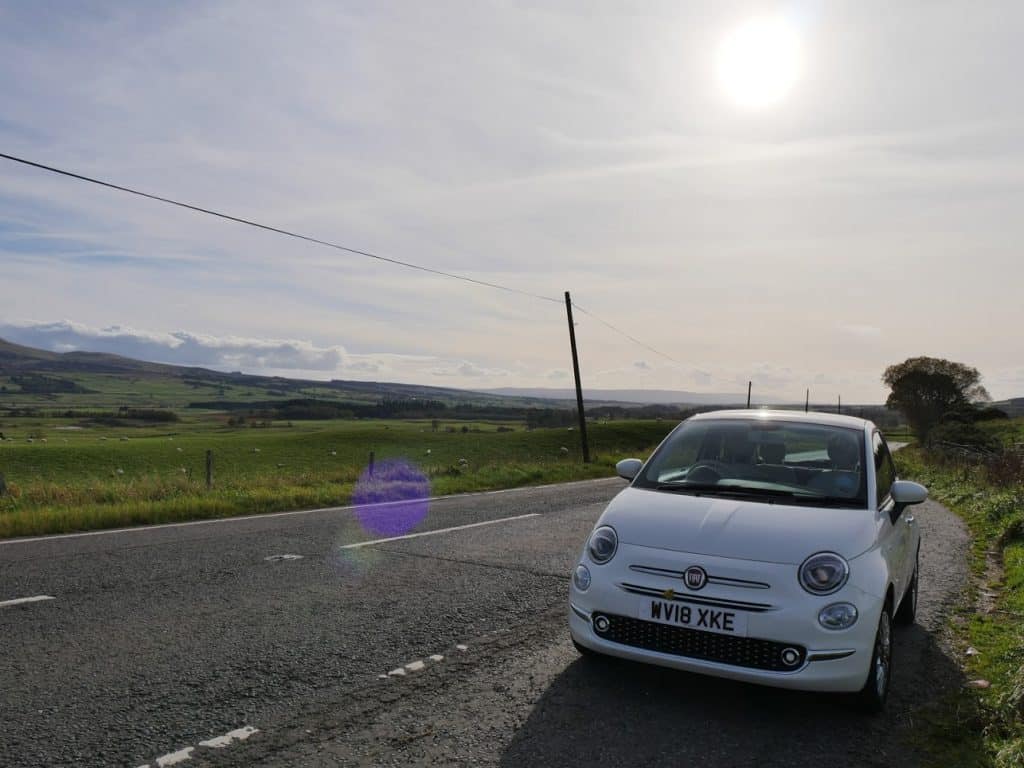
Obstacles Everywhere
If you’re used to driving in city areas, you may already be used to dodging obstacles everywhere you go, but driving in the UK seemed to be filled with more hazards on the road than I was used to.
Not everyone has driveways (called simply “drives” here), and that means that many people are parking on the road, even if they live on a main thoroughfare where people drive quite fast!
You also have a favorite British pastime, the weekend cyclers or bicyclists who especially come out in force in good weather.
And in more rural areas, it’s not unusual to come past a tractor or some horses also sharing the road with you.
Being aware of your surroundings is always a necessity when being behind a wheel, but especially in the UK, I’ve learned to anticipate and react to things in my path.
That is, of course, until I ran my car straight into a parked van because I was temporarily blinded by the sun and it was parked in the road, but we won’t talk about that.
Parking
Every time my husband comes to the US, he’s known to point out parking spaces, only for us to be like “no! I’ll never fit in there!”
“Of course you can!” he’ll say, and we’ll still drive by it because we don’t have the clearance we want.
His “you can squeeze into that parking spot” attitude comes from his experience growing up in the UK, where parking spaces and cars tend to be much smaller.
Sometimes I’ll feel like I need to hold my breath when he’s parking about 6 inches away from other cars, but he always makes it just fine because he’s British and I think that means you’re just born good at fitting into small spaces.
As I mentioned before, in Florida we have so much room and parking options that we really don’t learn how to parallel park.
Maybe there are a few places where you could do it, but a lot of us aren’t proficient at it and will happily park miles away to not have to do it.
Compare that to the UK, where parallel parking could very well come up on your test and many parking spots in places around the country are only parallel parking on the street.
I spent hours learning how to parallel park when I was studying for my driving test and eventually got the hang of it, though I’ll still never get used to not having feet of clearance on other side of me when I’m parking.
That leads me to another point – if you’re from suburban or rural America, you may be shocked at how limited parking can seem in the UK.
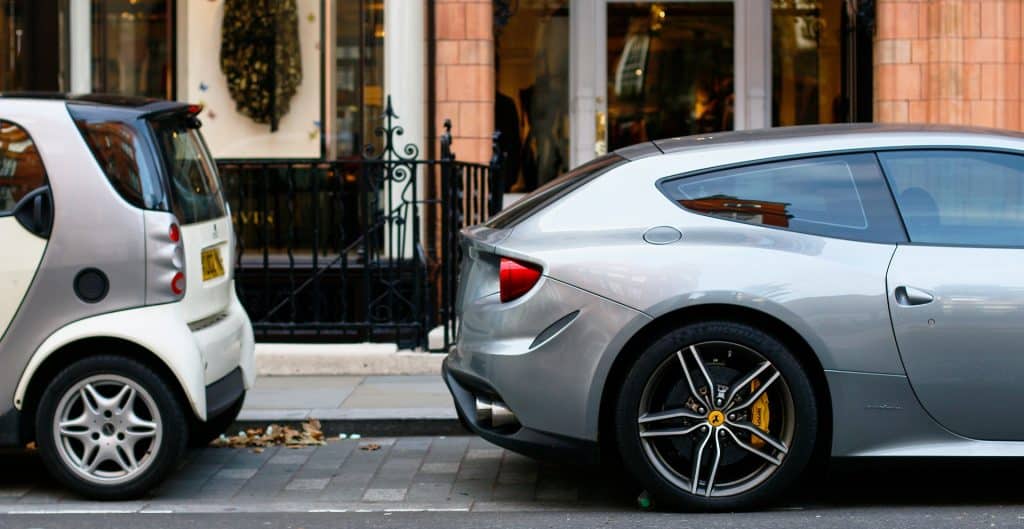
Again, everything is smaller, and so parking is at a premium.
“Where can I park,” is a question often asked by many people making appointments, buying tickets for a show or just generally wanting to go shopping in town.
Parking is also often paid for with time limits more often than in America.
Not just metered parking, but parking lots (known as “car parks” in the UK) where you will have a two or three hour time limit or need to pay and them get reimbursed when you buy something from the store.
Even most hospitals have paid-for parking, which some think is unfair due to the vulnerable nature of people who need hospital appointments or need to visit people at the hospital, but the rationale is that if it were free parking, people who didn’t need those spaces and simply wanted parking to get themselves somewhere else close by would use them up.
Even outside houses, people get funny about their parking spots.
We have a parking spot for our house that is actually a bit of a drive away, but there are also public spaces in front of our row of terraced houses.
When we first moved in, my husband parked in one of them, only to come out and find later than someone had parked directly behind him in an effort to block him in and make a point.
It turned out later that this person believed the parking spot to be “his,” despite the fact that it was officially on the land registry documents as a public space.
Finding parking in our neighborhood can be a challenge, which forces many people to park on the street or not next to their house, and he wasn’t willing to concede that this parking spot wasn’t actually “his.”
I convinced Guy to stop parking there because it wasn’t worth a feud with a neighbor, but every time we pull in, he always looks at the space, if unoccupied, and complains about not being able to park there.
If you haven’t caught on already, parking can be a contentious issue across the UK!
UK Travel Planning Guide: the FAQs
🏥 Should I buy UK travel insurance?
Absolutely yes. Basic coverage is not expensive, and as a visitor you are NOT covered under the NHS. Compare policies and prices with Travel Insurance Master here, a big name in the travel insurance business, and cross that off your list.
🔌 Do I need travel adapters for the UK?
Yes, you do, otherwise you won’t be able to plug in your electronics/phone/lifelines. I recommend this one, which is all-in-one so you can use it in other countries.
🚗 What do I need to drive in the UK?
The first thing you need to check out if you’re planning on renting a car in the UK is this guide to driving in the UK for visitors – the roads, signs, and driving experience will likely not be what you’re used to and it’s essential to prepare yourself to stay safe and aware.
🛌 What’s the best way to book hotels in the UK?
For UK hotels, Booking is the best site as it offers free cancellation on many properties. If you want an apartment, I always recommend VRBO over AirBnb.
📳 Will my phone work in the UK?
Yes – if you set it up right. Check out my guide on making your foreign phone work in the UK to ensure that you get the type of service you need.
🚿 Can I drink the water in the UK?
Yes, UK water is great and perfectly safe. But drink out of taps in any kitchen or use water fountains. Double check before drinking out of the taps in hotel bathrooms, though, as they may be on a different system. London water is safe to drink.

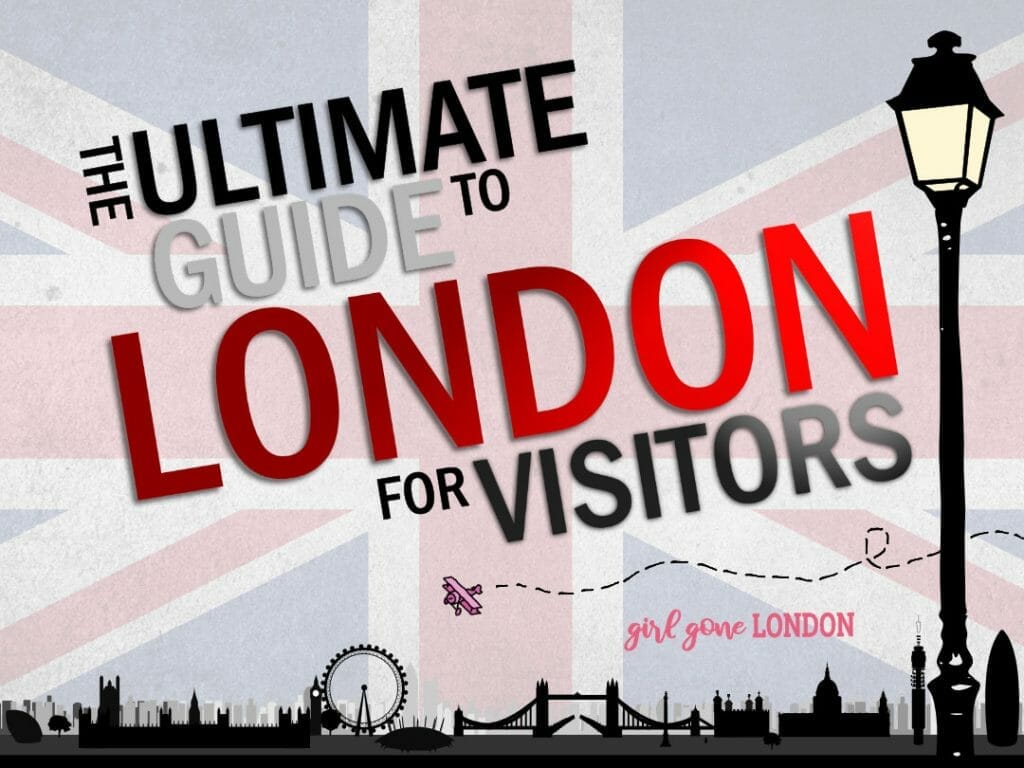

Hello,
I am an expat living in Colombia and am visiting the UK in October and have a hire car booked.
I hold a valid(clean)UK driving license, which has my last UK address on it from when I left the UK back in 2018.
Will this be a problem when renting the car?